New York City’s population density and geography make it particularly vulnerable to coastal storms. Over eight million people live on approximately 305 square miles of land with 578 miles of waterfront. To compound the risk, the potential for severe storms hitting New York City is expected to increase due to more frequent, more intense, and more northerly storms caused by global climate change. The city faces many challenges during and after such storms, but one of the most difficult is the possibility that hundreds of thousands of people could lose their homes.
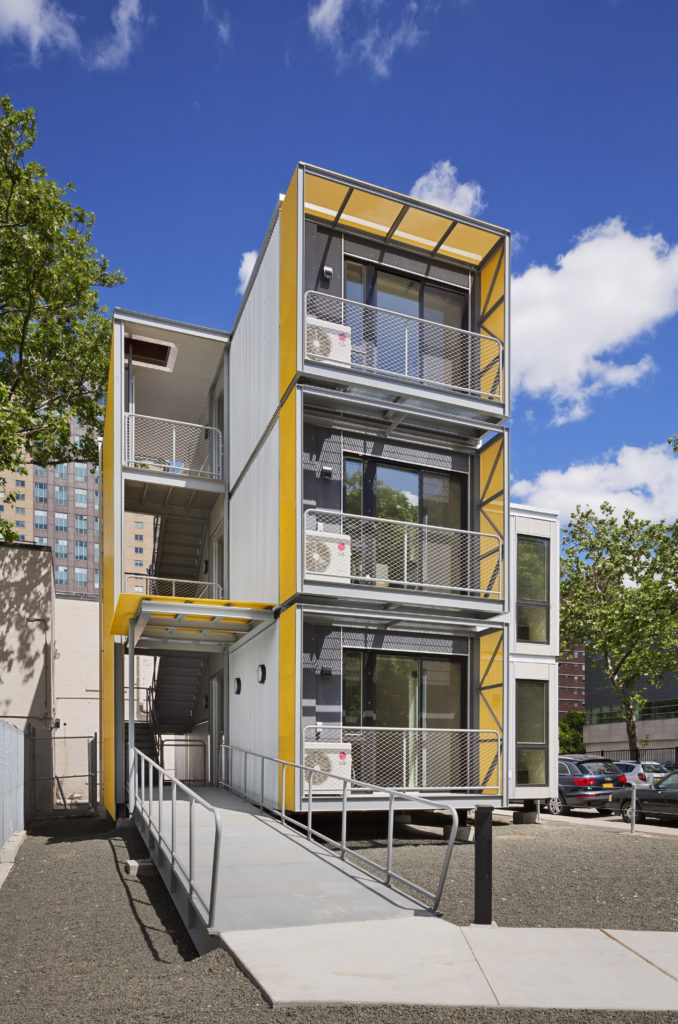
Superstorms like Hurricane Katrina and Hurricane Sandy proved that conventional disaster housing solutions aren’t adequate. In response, New York City’s Office of Emergency Management secured funding from FEMA and the US Army Corps of Engineers to address the issue. The city wanted to create reliable interim housing for people who could no longer live in their homes after a storm.
The result: The Urban Post Disaster Housing Prototype, a solution that represents a critical step forward in the way cities respond to disasters. It streamlines the city’s efforts, maximizes the effect of its resources through mass production, and provides expedient and environmentally-conscious accommodations to those in need. The multi-story, multi-family units can be deployed in less than 15 hours, in various arrangements calibrated for challenging urban conditions.
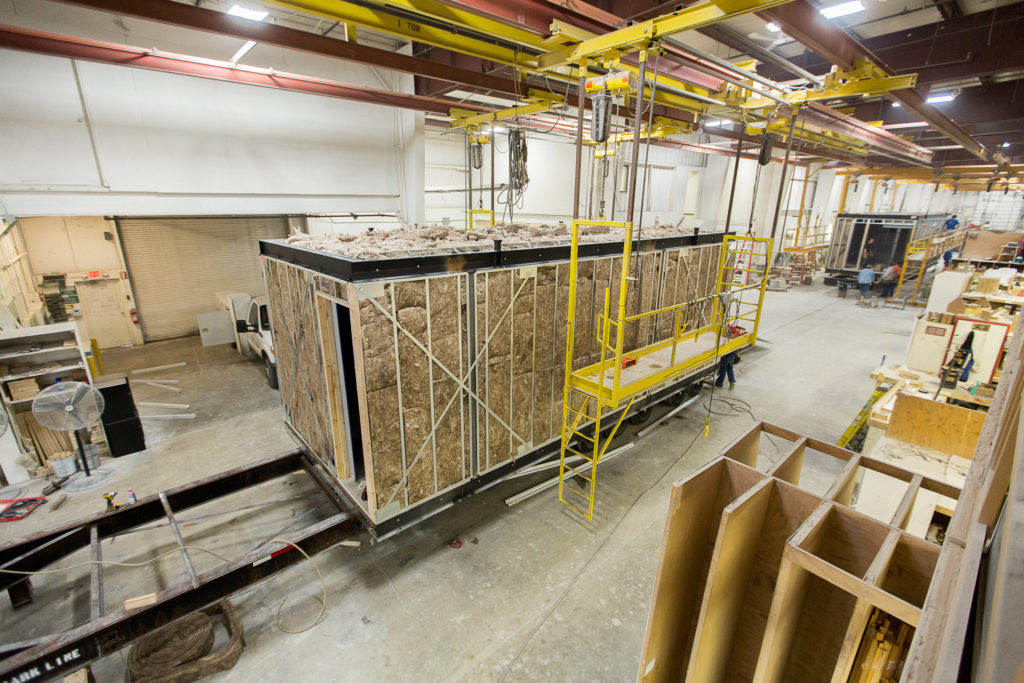
The project was preceded by more than six years of research on emergency housing by the city, according to James Garrison, Principal of Garrison Architects, which created the prototype. “Aside from providing shelter after a disaster,” he said, “the prototype allows residents to stay in their own communities instead of being displaced for months, or even years.”
“This concept of ‘shelter in place’ helps residents maintain their support networks—their friends and their families,” Garrison continued. “Keeping neighborhoods intact is crucial for successful rebuilding.”
The prototype uses the latest construction technology in conjunction with stringent requirements for safety, sustainability, durability, and universal design. The modules are infinitely flexible–they can be deployed in vacant lots, private yards, or public spaces. When needed, they are simply trucked to a site, craned into place, and plugged into utilities. Because the units are prefabricated, they cause minimal disruption to the local community during and after deployment.
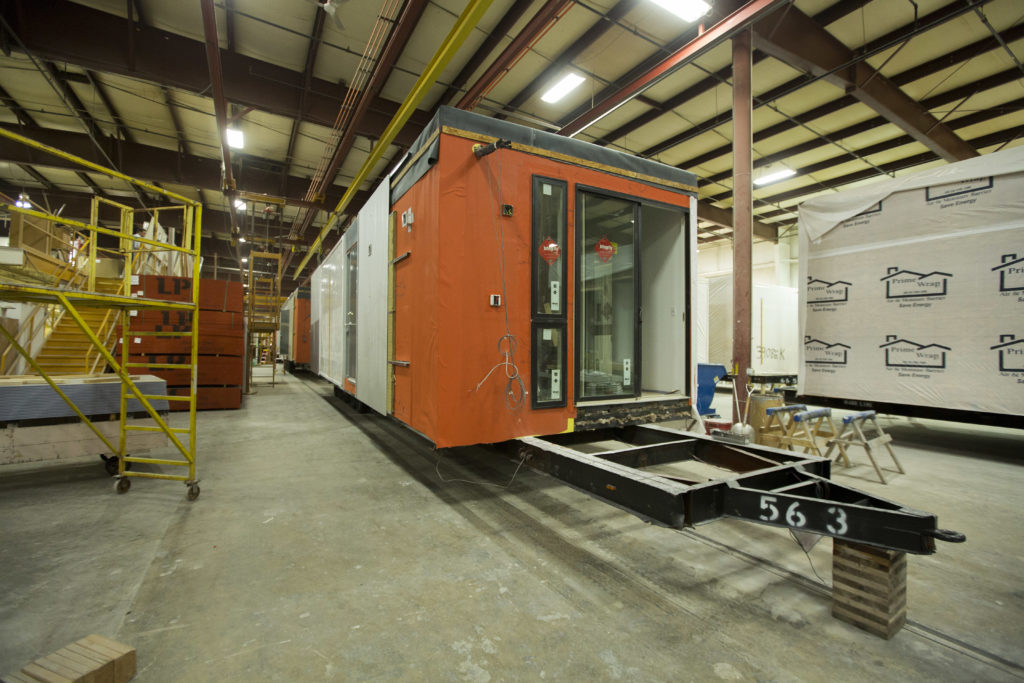
“The beauty of the units lies in their inherent flexibility. They can be stacked like Lego’s to create row housing, or they can be interspersed between existing homes and structures,” said Garrison. “And these modules aren’t just for New York City—they were designed to meet the strictest zoning requirements in the US, so they can quickly be sent anywhere in the country.”
For the prototype project, five modules were fabricated in Indiana by Mark Line Industries. They were then trucked to New York City and installed at the corner of Cadman Plaza East and Red Cross Place in Brooklyn by American Manufactured Structures and Services, general contractor for the project.
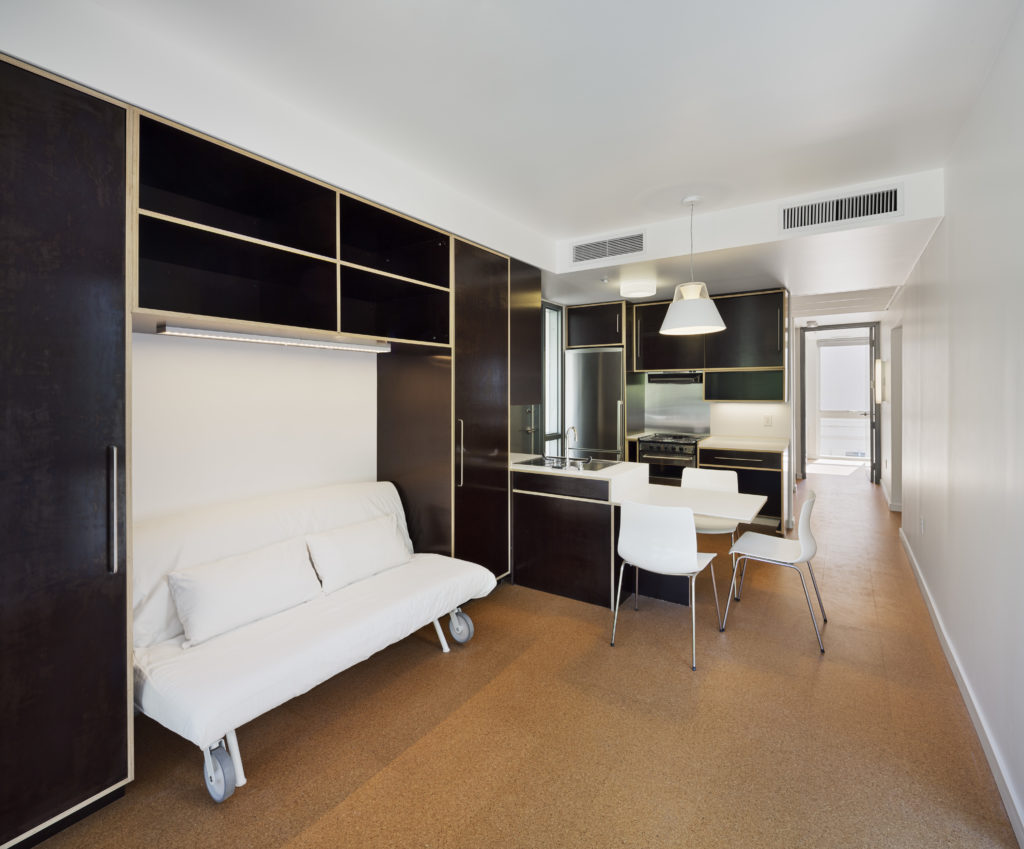
With one- and three-bedroom configurations, every unit features a living area, bathroom, fully equipped kitchen and storage space. Units are built with completely recyclable materials, cork floors, zero formaldehyde, and a double-insulated shell. In addition, floor-to-ceiling balcony entry doors with integrated shading lower solar-heat gain, provide larger windows, and add more habitable space. The units can be equipped with photovoltaic panels, which will not only alleviate pressure on the city grid, but also ensure the units are self-sustaining.
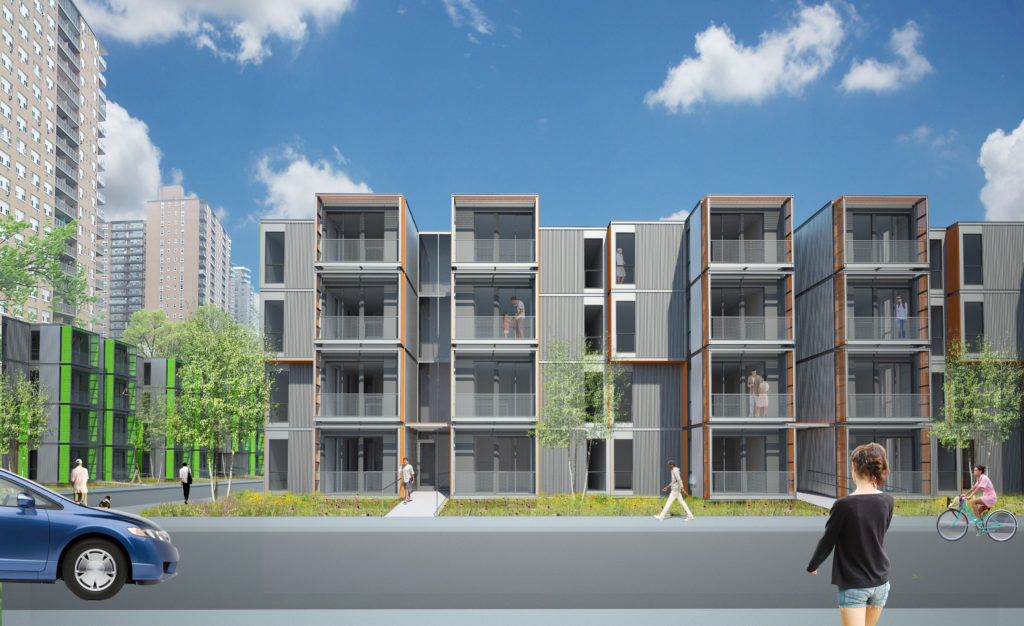
The prototype will remain onsite for one or two years, undergoing occupancy tests by the Polytechnic Institute of New York University, and Pratt Institute in Brooklyn. Guests will be invited to live in the units for five-day intervals to fully explore their functionality.
“We spent months honing all of the technical details for the prototype,” said Garrison. “Now we’re enjoying the process of investigating the intricate details of living in the units full time.”
Blog by Matthew Hoffman, Marketing Director at Garrison Architects.

